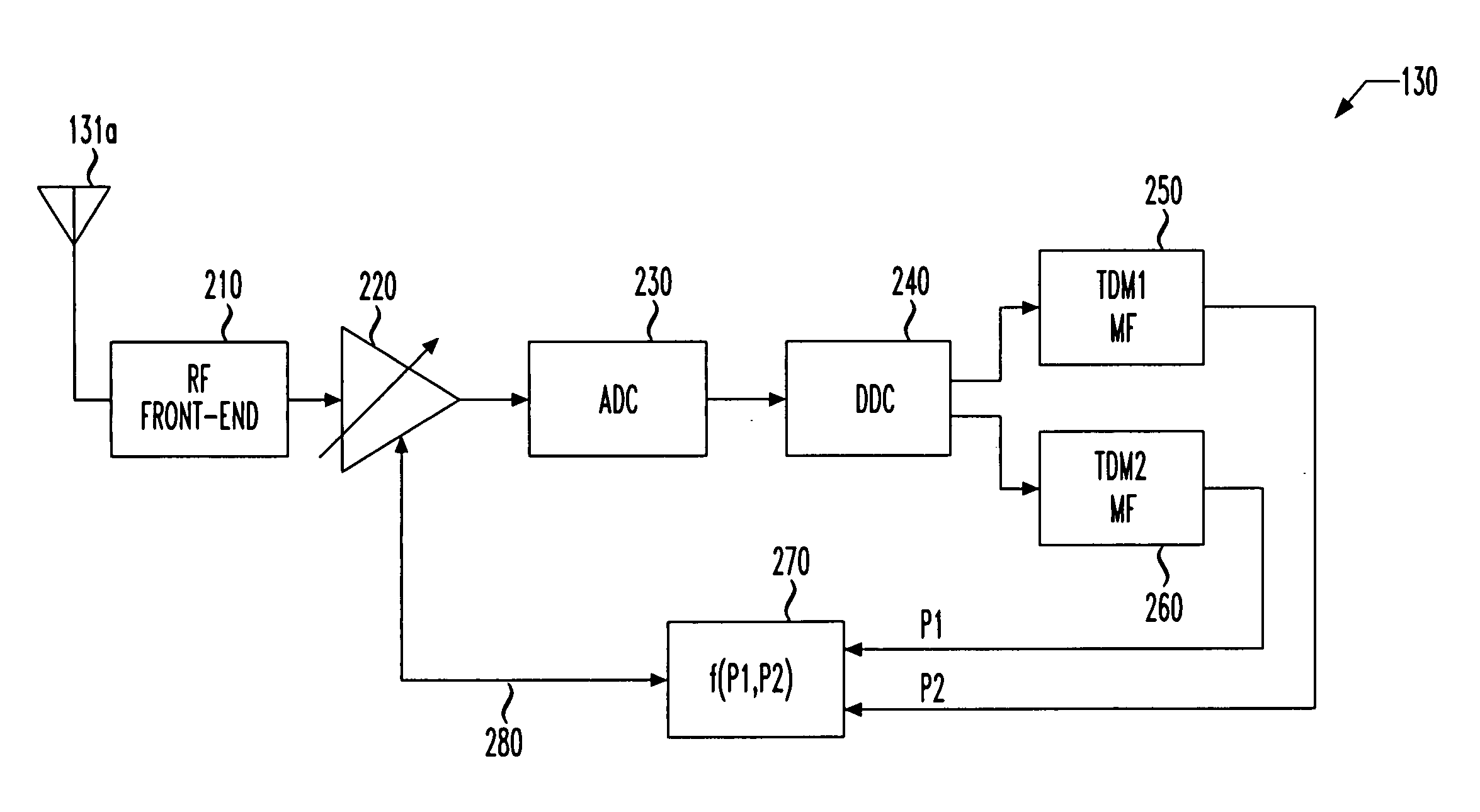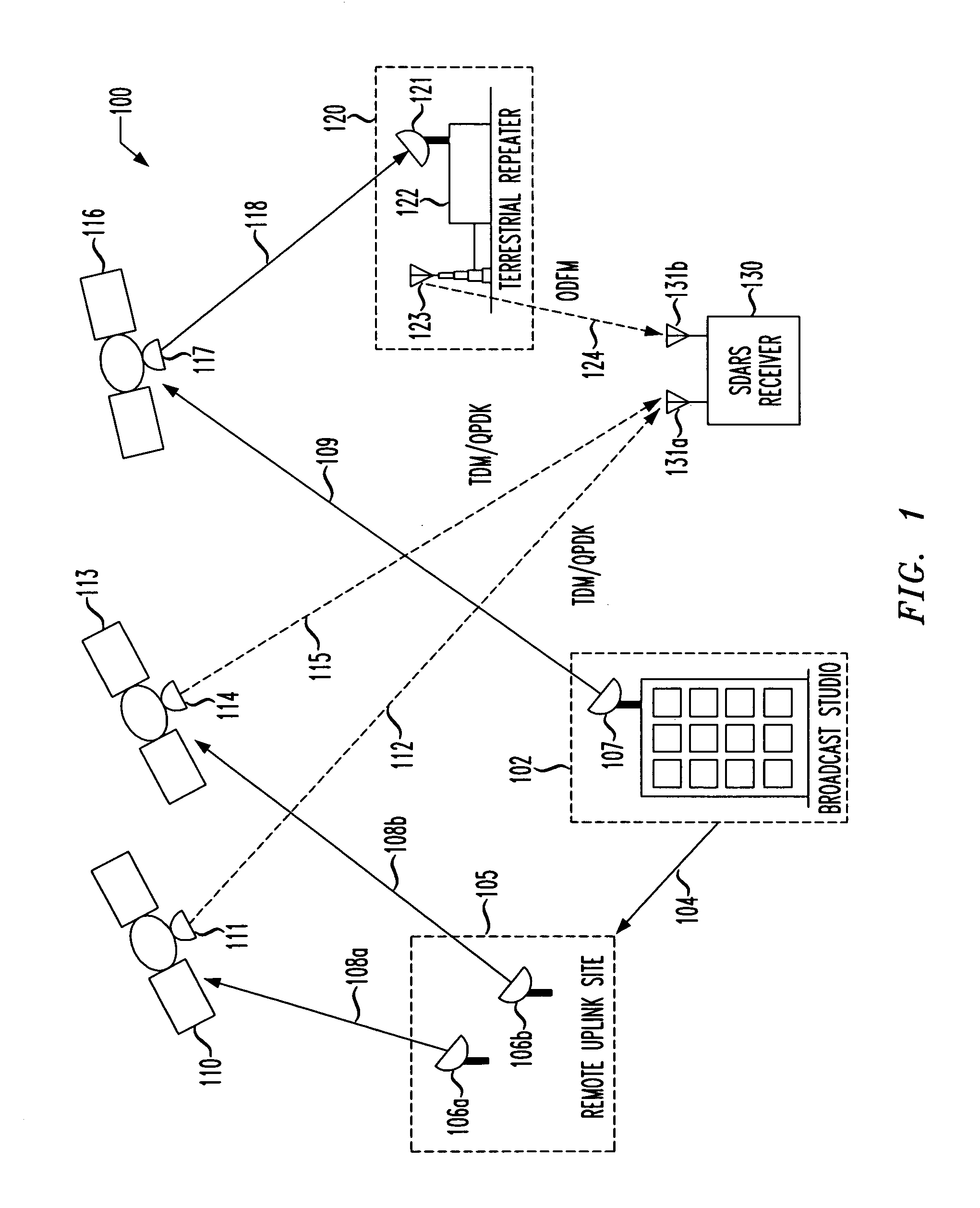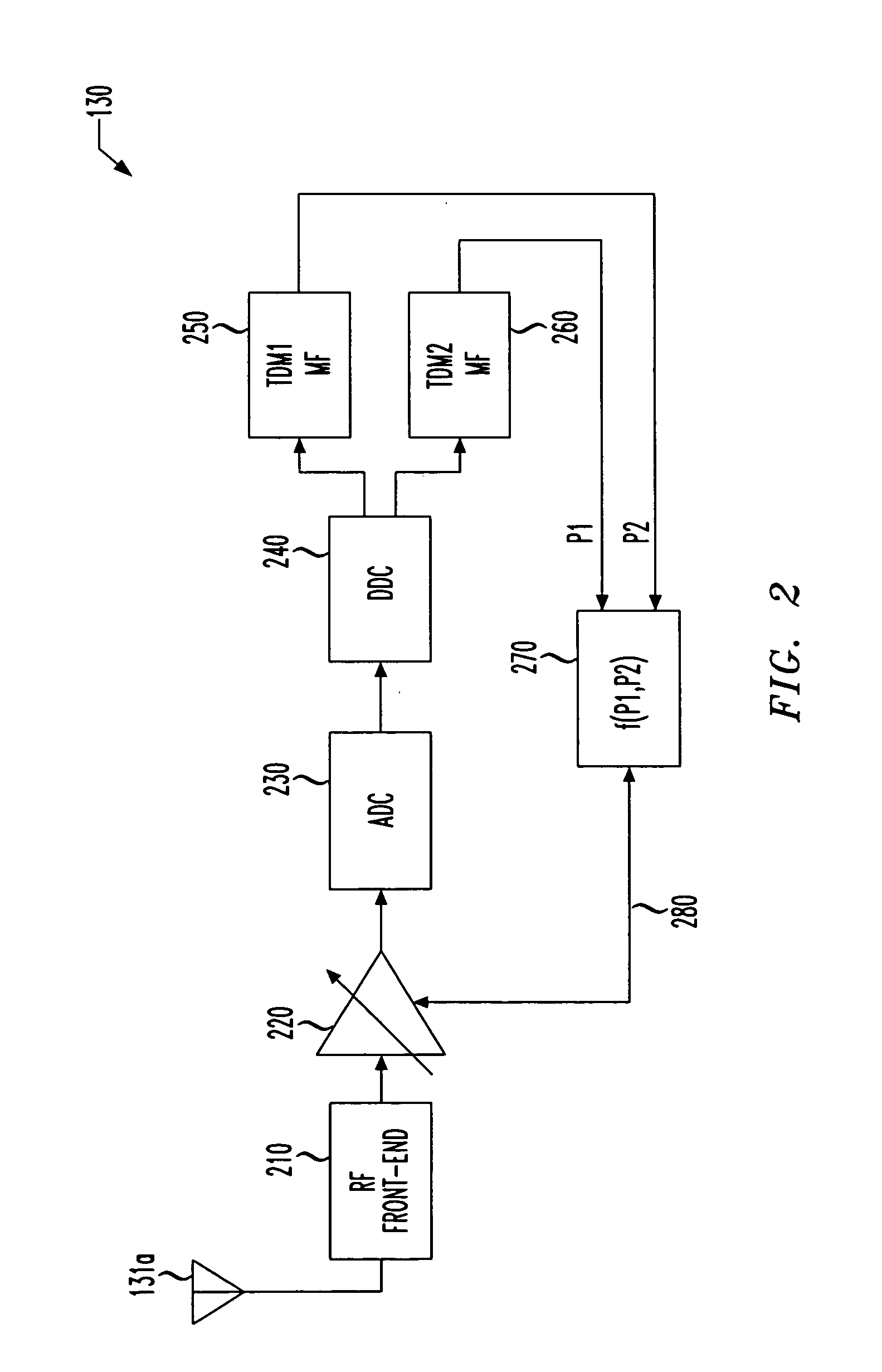Automatic gain control for satellite digital audio radio service receiver, method of automatically controlling gain and SDARS receiver incorporating the same
a satellite digital audio radio and receiver technology, applied in the direction of gain control, digital transmission, transmission monitoring, etc., can solve the problems of unnecessarily interrupted subscriber service, more difficult processing of remaining receivers, and increased noise interference, so as to reduce noise interference, increase the perceived power of satellite signals, and improve receiver performance
- Summary
- Abstract
- Description
- Claims
- Application Information
AI Technical Summary
Benefits of technology
Problems solved by technology
Method used
Image
Examples
example 1
Two AGC Functions, One Step
[0037] For Example 1, it will be assumed that, if P2−P11,P2) AGC function is suitable for developing the AGC control signal. However, if P2−P1>=T, another AGC function is needed. In Example 1, that AGC function is f(P1,P2)=P1 (simply the first TDM power signal). Thus, the following two AGC functions result: f(P1,P2)={max(P1,P2)P2-P1<TP1P2-P1>=T.
[0038] One possible disadvantage of Example 1 is that a step exists between the f(P1,P2)=max(P1,P2) AGC function and the f(P1,P2)=P1 AGC function. The instability in the AGC control signal that results from the step may be sufficient to cause bit error rates (BER) in the SDARS receiver 130 of FIG. 1 to increase to an unacceptable level. However, the step may be acceptable in some applications.
example 2
Three AGC Functions, Two Steps
[0039] For Example 2, it will again be assumed that, if P2−P1(P1,P2)=max(P1,P2) AGC function is suitable for developing the AGC control signal. However, the f(P1,P2)=P1 AGC function will only be allowed when P2−P1>2T. In the interim region of T2−P1(P1,P2)=(P1+P2) / 2 (an average of the first and second TDM power signals). Thus, the following three AGC functions result: f(P1,P2)={max(P1,P2)P2-P1<T(P1+P2) / 2T<=P2-P1<2TP1P2-P1>=2T.
[0040] It is apparent, however, that two steps exist between the f(P1,P2)=(P1+P2) / 2 AGC function and the f(P1,P2)=P1 AGC function. The instability in the AGC control signal that results from these two somewhat smaller steps may still be sufficient to cause BER in the SDARS receiver 130 of FIG. 1 to increase to an unacceptable level. However, the steps may be acceptable in most if not all applications.
example 3
Three AGC Functions, No Steps
[0041] For Example 3, it will again be assumed that, if P2−P1(P1,P2)=max(P1,P2) AGC function is suitable for developing the AGC control signal and also that the f(P1,P2)=P1 AGC function is suitable when P2−P1>2T. In the interim region of T2−P1(P1,P2)=2(P1+T)-P2 (a difference between twice a sum of the first TDM power signal and the nonzero threshold and the second TDM power signal). Thus, the following three AGC functions result: f(P1,P2)={max(P1,P2)P2-P1<T2(P1+T)-P2T<=P2-P1<2TP1P2-P1>=2T.
[0042] It is apparent that the steps of Examples 1 and 2 have been eliminated, which should improve the stability in the AGC control signal and the resulting BER in the SDARS receiver.
[0043] Those skilled in the pertinent art will readily see that many variations of the above examples are possible. Other multiples of the nonzero threshold may be useful to define other function domains. Multiple nonzero thresholds may be used. Many other AGC functions ...
PUM
 Login to View More
Login to View More Abstract
Description
Claims
Application Information
 Login to View More
Login to View More - R&D
- Intellectual Property
- Life Sciences
- Materials
- Tech Scout
- Unparalleled Data Quality
- Higher Quality Content
- 60% Fewer Hallucinations
Browse by: Latest US Patents, China's latest patents, Technical Efficacy Thesaurus, Application Domain, Technology Topic, Popular Technical Reports.
© 2025 PatSnap. All rights reserved.Legal|Privacy policy|Modern Slavery Act Transparency Statement|Sitemap|About US| Contact US: help@patsnap.com



